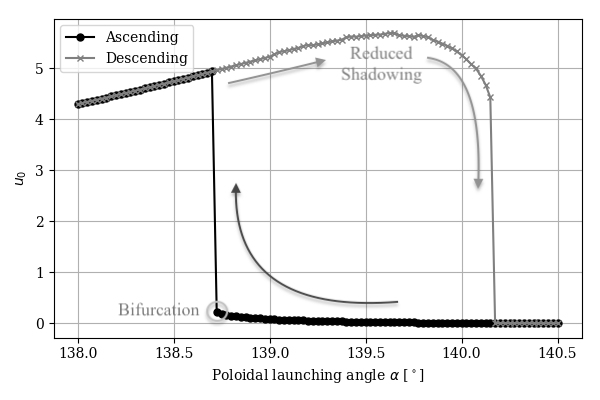Speaker
Description
While mitigation will play a critical role in reducing the impact of disruptions in ITER, it should be used only as a "rarely-used last resort" [Strait et al. 2019], i.e. reliable disruption avoidance strategies are necessary, the most important of which is the stabilisation of magnetic islands. Indeed, in the JET tokamak equipped with an ITER-like wall, 95\% of disruptions are preceded by magnetic islands [Gerasimov et al. 2018]. These can be stabilised by radio-frequency (RF) current drive at the island O-point, which generates a stabilising resonant component of the magnetic field [Reiman 1983].
RF waves damping on fast superthermal electrons, such as electron-cyclotron (EC) or lower-hybrid (LH) waves, display a strong sensitivity of damping to temperature. This can lead to the nonlinear current condensation effect [Reiman and Fisch 2018], a positive feedback loop where the power deposition raises the temperature, which in turn increases the damping, and so forth. In this manner, the power deposition, and thus also the current, can be increased and focused at the island O-point, thereby lending further help in stabilising magnetic islands.
We have implemented a numerical tool to calculate current condensation effects in realistic geometries, by self-consistently coupling ray-tracing calculations of wave propagation and damping with a diffusion equation solver for the island temperature [Nies et al. 2020, in preparation]. This treatment extends previous analytical theory [Reiman and Fisch 2018, Rodriguez et al. 2019] and accounts for relativistic effects in the damping and the island geometry. Moreover, bifurcation and hysteresis phenomena in the island temperature can be investigated. We show these can be achieved by varying the poloidal launching angle, as displayed in Fig. 1. Furthermore, the same figure shows that variation of the launching angles can help to avoid the nonlinear shadowing effect, where most of the wave's power is deposited at the island edge before it can access the island O-point.

The developed numerical tool also permits the investigation of current condensation effects in realistic scenarios for ITER. First results indicate that hysteresis phenomena related to current condensation can be obtained in ITER scenarios, at realistic values of diffusion coefficient, input power and island temperature perturbation. A detailed optimisation study for stabilisation of large magnetic islands in ITER is in preparation. Besides the nonlinear current condensation effect, the planned ITER launcher position, stiff gradient effects, and gaussian beam profiles are included. One aim of this study is to verify whether the planned ITER toroidal launching angle of $\beta = 20^\circ$ remains optimal when taking into account current condensation effects. Indeed, this choice reflects a compromise between higher current drive efficiency at large $\beta$ and narrower deposition profiles at low $\beta$. As current condensation can help to narrow the deposition profile on the island O-point, it could allow for the use of larger toroidal launching angles, thereby leading to higher driven current and more reliable stabilisation of magnetic islands.
This work was supported by U.S. DOE DE-AC02-09CH11466 and DE-SC0016072.
| Member State or International Organization | United States of America |
|---|---|
| Affiliation | Department of Energy, Princeton Plasma Physics Laboratory |
